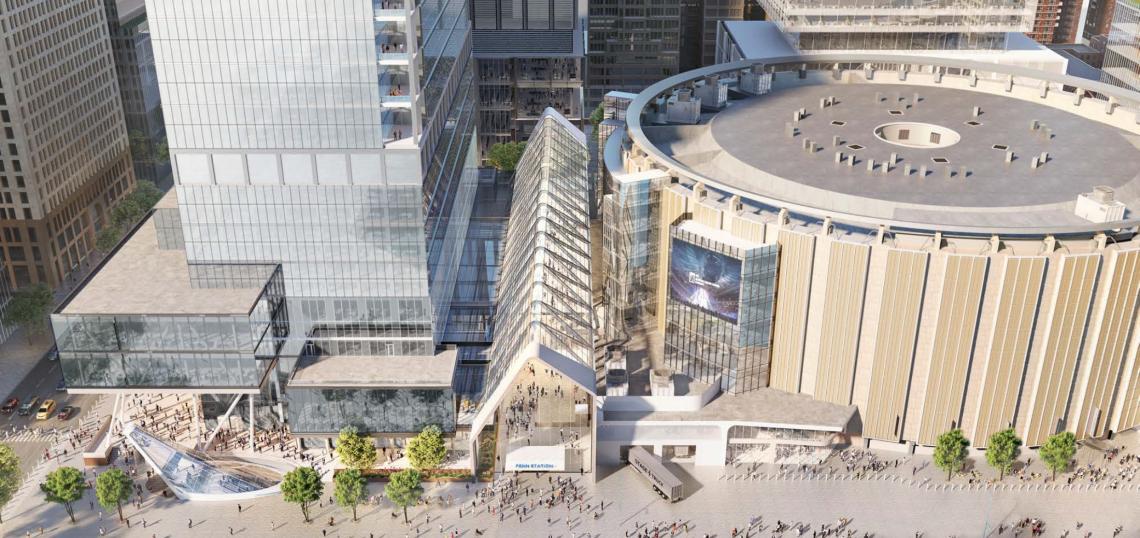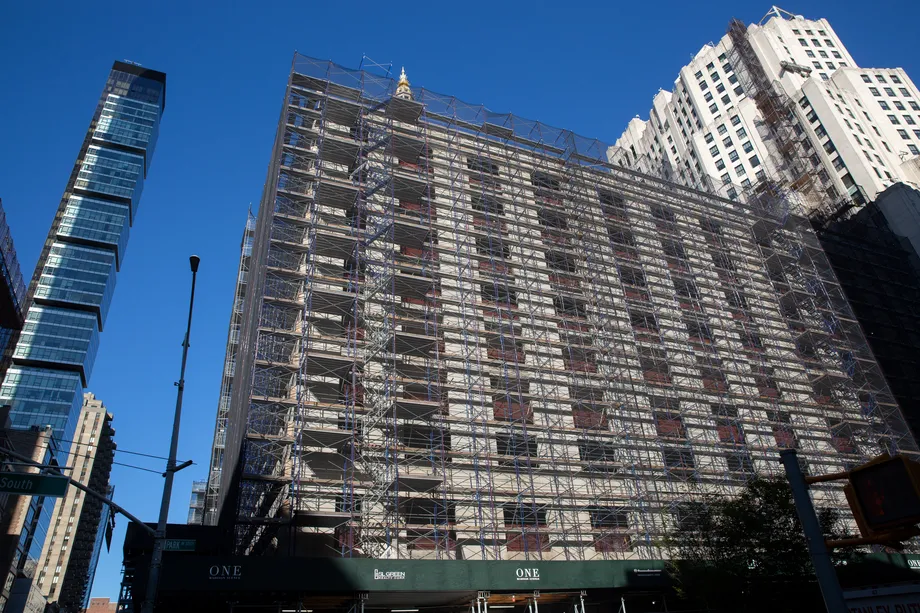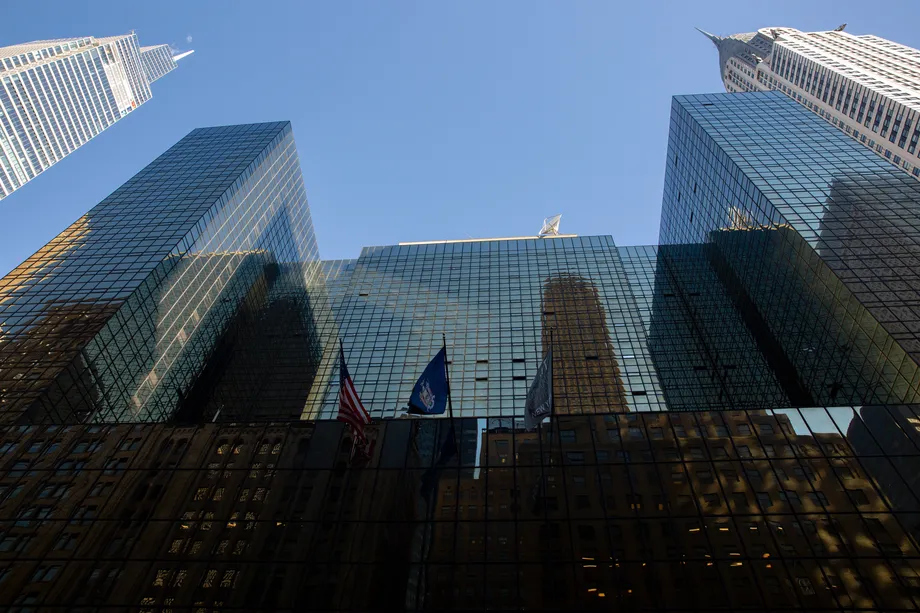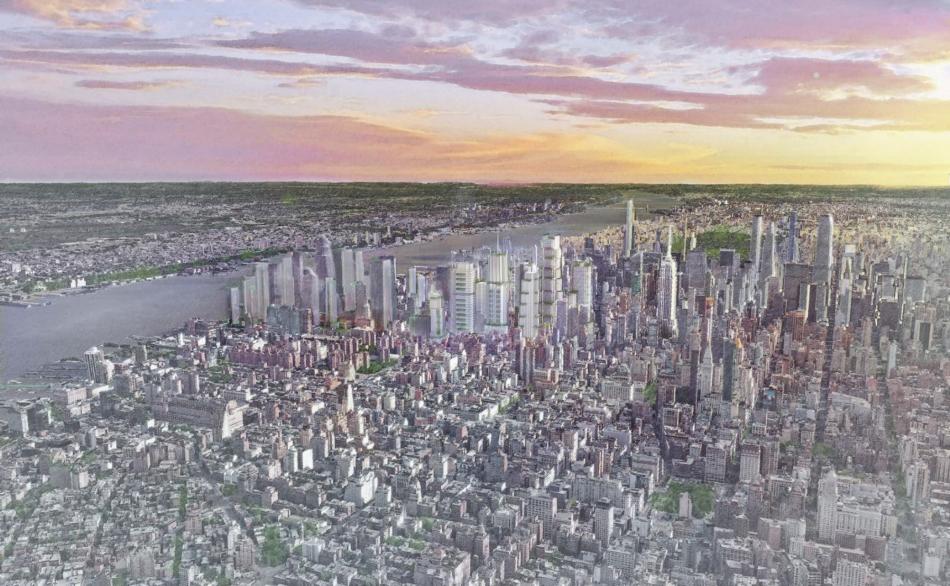This story was originally published on November 4, 2021 by THE CITY. Sign up here to get the latest stories from THE CITY delivered to you each morning.
Even if Gov. Kathy Hochul’s scaled-down plan to build office towers around Penn Station to revitalize the area and pay for a new transit station proceeds smoothly, construction on the first building wouldn’t begin for two years.
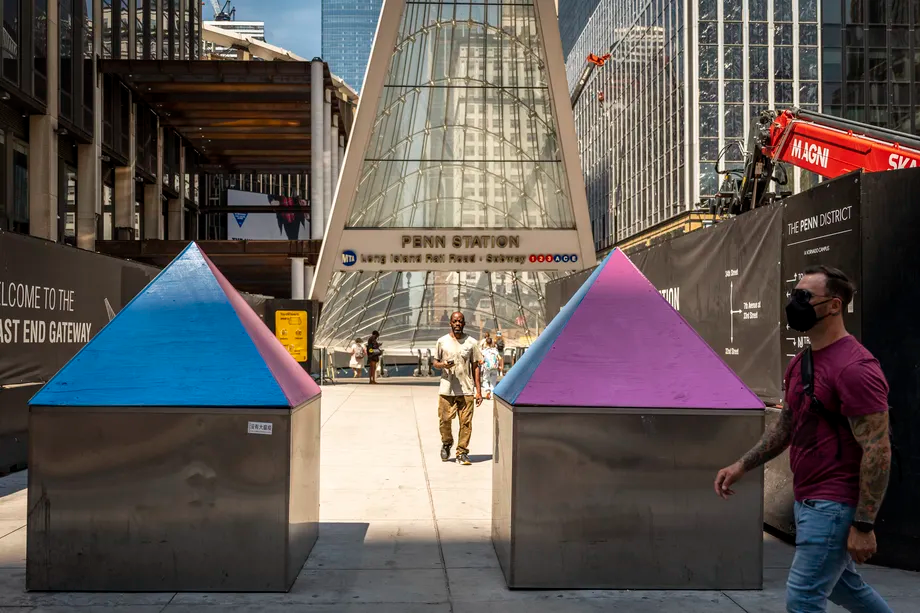 Gov. Kathy Hochul recently scaled-down plans to build office towers and more around Penn Station.Hiram Alejandro Durán/ THE CITY
Gov. Kathy Hochul recently scaled-down plans to build office towers and more around Penn Station.Hiram Alejandro Durán/ THE CITY
By then, it likely will be clear whether the city’s economy has rebounded from the pandemic recession and whether companies will fully embrace a return to the office.
But three of New York’s biggest real estate companies are not waiting around — instead, they’re wagering billion-dollar bets that COVID-spurred remote working and vacancies will give way to an office boom.
“Come on. Firms who [rely on remote work] are going to suffer,” SL Green CEO Marc Holiday dismissively told a stock analyst who questioned his commitment to building more office space during a recent conference call.
“The technology firms are growing. The startups are growing. Business services are growing,” he added.
SL Green, the city’s largest owner of commercial office space, is spending $3 billion to build a modern and expensive-to-rent office building on Madison Avenue between 23rd and 24th streets rising out of the historic home of the Metropolitan Life Insurance Co.
Meanwhile, RXR Realty and TF Cornerstone are anxiously awaiting final City Council approval to tear down the Hyatt Grand Central New York — the project that thrust Donald Trump into the New York spotlight in the early 1980s, long before his presidency.
The companies plan to replace the building over Grand Central Terminal with a modern 2.2 million-square-foot office tower that includes a modestly sized hotel and retail. RXR Realty and TF Cornerstone won’t put a price tag on its joint project just yet but agree that at least $3 billion will be needed.
“Companies are looking for buildings with amenities, modern infrastructure and access to transit that will help them draw their teams back to the office,” said Scott Rechler, the CEO of RXR.
‘No Regret, No Doubts’
Despite developers’ faith and the constant assurances from Mayor Bill de Blasio that New York’s future is bright, data shows the economy remains depressed.
The city failed to add any jobs from July through September, putting New York 525,000 positions below the record of early 2020, with only San Francisco and Los Angeles among major cities with a lower percentage of jobs regained from pandemic lows.
The city’s 9.8% unemployment rate is double the national rate of 4.8%.
The vacancy rate for Manhattan office space, despite a surge in leasing during the third quarter, remains near a record at 18.6%. A recent report from state Comptroller Thomas DiNapoli noted that the collective value of office buildings in Manhattan fell by $29 billion in 2020.
“The future of office real estate is largely uncertain,” he said last month.
The city’s economy is built on the office sector, accounting for two-thirds of the city’s gross domestic product, the broadest measure of the economy, according to the DiNapoli report. Commercial office buildings are valued at $172 billion, and landlords and tenants pay 11% of the total $63 billion in taxes the city collects.
The SL Green site opposite Madison Square Park, called 1 Madison, was first developed as an office building more than a century ago when the Metropolitan Insurance Company constructed a headquarters there. Met Life added on and rebuilt over decades until it had two massive office buildings both on that block and the one north where some 30,000 people came to work every day.
“When you think of this block and the next one, it has been in continual redevelopment over its history,” said Robert Schiffer, the SL Green executive in charge of the project.
SL Green, which bought the property in 2007, has lopped off floors 10 through 15 and gutted the remaining ones for a complete rebuild.
It is now excavating down to the bedrock for the foundation to add an additional 18-story glass-and-steel office tower on top of the nine-story concrete base, bringing the total square footage at 1 Madison to 1.4 million square feet.
When the pandemic shutdown hit in March 2020, SL Green had its plan for redevelopment almost ready to go. When construction work was allowed to resume in the summer, demolition started.
“We have no regrets about going ahead,” said Schiffer, “and no doubts.”
‘High Demand for Quality’
The Grand Central project, now named 175 Park, if approved, will begin demolition next year.
The new building will be 83 stories, with a downsized Hyatt hotel and office space that will be among the costliest in the city. The project is rising under the Midtown East zoning hatched during the Bloomberg administration and finally enacted three years after de Blasio’s election. The goal: to spur new office construction in Midtown.
The group will spend upwards of $400 million improving the claustrophobic subway stop below the building. Plans call for raising the ceilings, restructuring the entrance hall, replacing passages and opening up the mezzanine level as well as adding 25,000 square feet of public terraces.
Deciding to proceed was an easy decision to make because of the success of SL Green’s One Vanderbilt, the city’s newest skyscraper, on the west side of Grand Central Terminal, Rechler said.
That building is more than 91% leased, despite the pandemic. It is getting rents of $150 to $200 a square foot for the lower floors, compared with an average of a little more than $70 for the neighborhood, recent real estate reports show.
SL Green is asking $322 a square foot for the top 93rd floor, which is more than the city’s record of $300 a square foot paid by the hedge fund Citadel at 425 Park Avenue in 2019.
“The building demonstrates the high demand for quality office space,” Rechler added.
SL Green almost landed Facebook as its anchor tenant for 1 Madison before the social media company chose a site on the far West Side. SL Green recently announced it had signed its first tenant, Chelsea Piers Fitness, to a 20-year lease to take 56,000 square feet for its health club over four floors.
Schiffer said his company is in talks with tech companies, insurance firms, financial firms and consumer products companies. Many tech companies are based in the Flatiron District and Google dominates the area to the south and west, where it just bought an office building for $2.1 billion with renovation nearing completion.
Rechler, too, is talking to tech companies and feeling confident he can snare the anchor tenant that will allow him to get the financing he needs.
“Compared with a year ago, some of this risk has been mitigated by One Vanderbilt,” he said.
‘The City Will Adjust’
No one disputes that the pandemic has changed the office market.
The real estate firm CBRE projects a permanent reduction of 9% in need for Manhattan office space, which totals more than 460 million square feet.
Hochul decided to downsize the Penn Station project championed by her predecessor, Andrew Cuomo, that drew community opposition for being out of scale with the area.
She lopped off 7% of the proposed new space, added some market rate and affordable housing and pushed off an expansion of Penn Station in favor of a new, accessible train station.
But like the other projects, it remains primarily a plan to build office space and represents a bet on the city’s recovery, with an optimistic projection that it will take a decade for all 10 planned buildings to open.
SL Green and the RXR Realty and TF Cornerstone partners are wagering that real estate winners will be modern buildings, despite high rents — and the losers will be older buildings with small floors, columns jutting through the space and outmoded office infrastructure.
“What the East Side zoning has done is put good policy in place where everyone knows the rules,” said Rechler.
The doubts about the office market today are similar to the doubts about whether the city would be able to rebuild after 9/11, said Carl Weisbrod, a key player in the drive to rebuild the site with office towers when he headed the Alliance for Downtown.
At one point, he remembers, the Comptroller of the Currency, one of the federal regulators of banks, told financial firms to decentralize their operations away from New York, a decision that never took hold.
Weisbrod, who later became de Blasio’s point person on the Midtown East rezoning as chair of the City Planning Commission, insisted the city needs more modern office buildings despite the pandemic-driven changes in work.
“We will see more remote work and people not working not 100% full time,” he said. “But the city will adjust to it. The growth industries — mainly tech, which has the workforce most capable of working remote — are gobbling up space.”
THE CITY is an independent, nonprofit news organization dedicated to hard-hitting reporting that serves the people of New York




